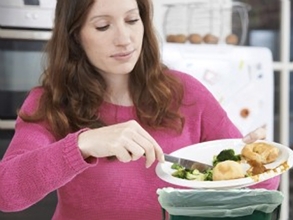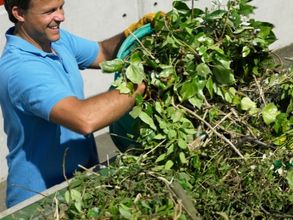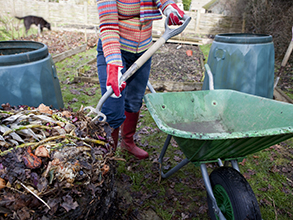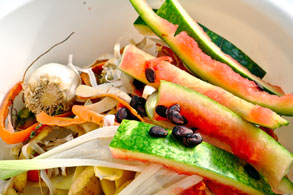Curbside Composting
Most homes in Kitsap County can subscribe to curbside collection of food scraps and yard waste. Search our interactive map to see if you are eligible to order compost service at home.
Learn the ins and outs of curbside composting and contact your service provider to sign up for curbside services.
Recommendation
This method is the best choice for households. You will divert the most food and plant waste from landfills with compost collection service. Nearly all food scraps and yard waste can be composted through this method, with the exception of noxious weeds and cooking oil (fats and grease). Food that doesn't compost in a backyard setup can easily be composted with curbside service through better methods present at commercial composting facilities.
Drop Off Yard Waste
Take clean yard waste to special drop-off sites in Kitsap County. Find a site near you.
Check with each site to verify what is accepted. Do not compost noxious weeds. Bag and toss them in the garbage.
Recommendation
This method is a good choice when you're performing seasonal or overgrown landscape clean up and have a lot of one-time debris that doesn't fit in a curbside collection bin. Larger debris from storms or land development may also require a special trip to drop off waste. Contact a private yard waste company to see if large branches and stumps that are too big for curbside collection are accepted at drop off sites.
Backyard Composting
Backyard composting is best for yard and garden wastes like grass, leaves, and small garden cuttings. You can also put some fruit and vegetable food scraps into a backyard compost pile. There are different methods of backyard composting.
Need composting advice? The Kitsap Master Gardener Program answers questions about composting and gardening, offers clinics and workshops, and maintains learning gardens and compost demonstration sites.
Additional composting resources are available through WSU's Center for Sustainable Agriculture.
Recommendation
This method is a good choice for gardeners who want to reuse their own garden waste to improve their soil and save money on purchasing compost each year. By reintroducing compost into gardens, the soil will retain more moisture and reduce the need for watering and chemical fertilizer. This method does not capture processed foods (pasta, canned beans, pizza crust) or food from animal products (bones, meat, dairy), so it's also beneficial to have curbside collection. Curbside service sends other food waste and branches too large for backyard methods to a commercial composting facility.
 Worm Composting
Worm Composting
Worm composting is best for kitchen scraps like fruit and vegetable peels. Red wiggler worms create vermicompost, a valuable fertilizer and soil builder. You can make a worm bin from inexpensive materials or purchase a pre-made worm bin kit. Worm composting can be done indoors.
Recommendation
This method is a good choice for small households, gardeners, and those who generate less waste or have small spaces. Worm bins take up little room, can be stored under a sink, and don't have odor when managed well. The castings from worm composting is highly beneficial to houseplants and outdoor plants alike. Castings are easy to harvest and can be applied to soil year round to improve plant nutrients.
Kitsap County Solid Waste Division offers Adopt a Worm Classroom Composting Lessons for public, private, and home schools.
How to worm compost
There are many ways to worm compost. We recommend that beginners start by making a worm bin from a small plastic tote.
Supplies Needed:
Red Wiggler (Eisenia fetida) worms. Buy composting worms online (search "red wiggler worms Washington"), locally at Bay Hay & Feed (call ahead for availability) or 3-in-1 Worm Ranch, or ask a local social media group if anyone has worms to share.
A plastic bin measuring approximately 2ft x 1.5ft x 9in. Drill holes in the bottom and sides for airflow.
A tray to put under the worm bin to catch vermicompost and drainage if it occurs. Drainage should not occur ; it's a sign your bin is too wet.
Bedding. Shredded paper, brown leaves, or straw. Do not use shiny paper, envelopes with plastic windows, or paper containing plastic.
Fruit and vegetable scraps to feed the worms. Use the Worm Feeding Guide.
Set Up:
Get started with the Worm Bin Quick Start and Care Guide.
Tips for Success:
Keep food scraps in the bin covered with bedding to prevent fruit flies and odor.
Regularly mix the bin contents regularly to allow air flow and add fresh bedding to absorb excess moisture. Most problems that happen in worm bins come from too much moisture.
When your worm bin gets full of vermicompost, search online for harvesting methods.

